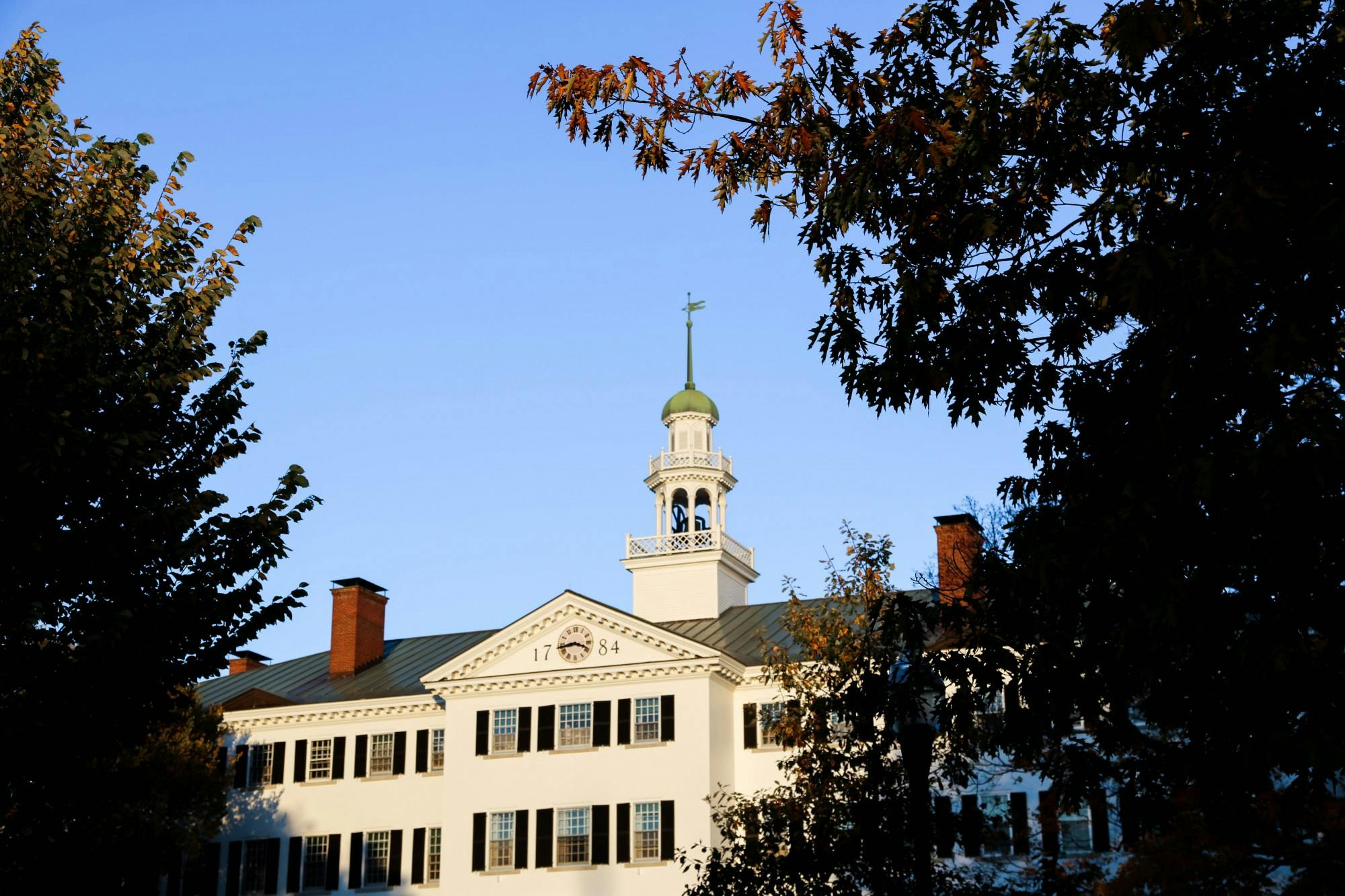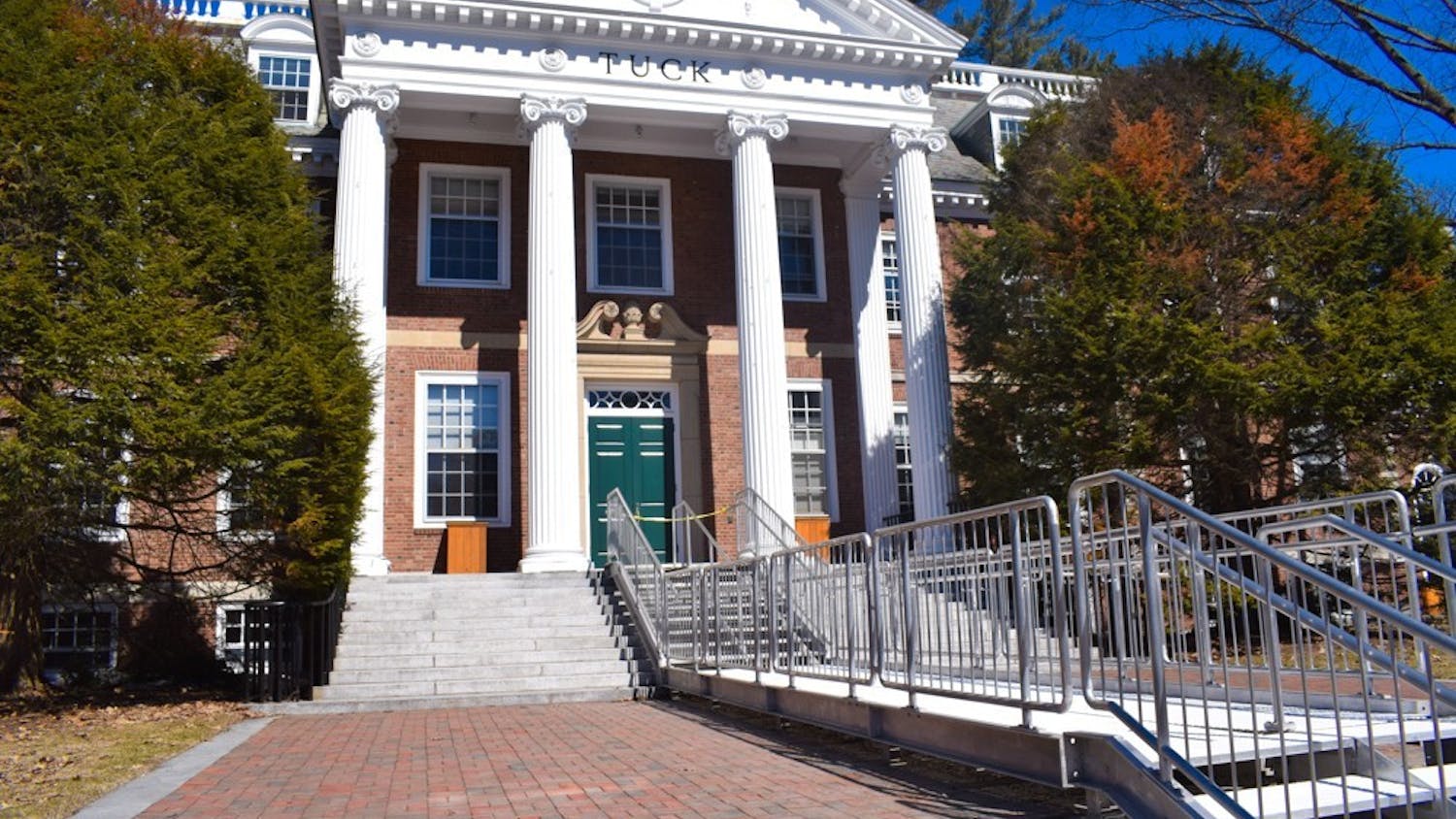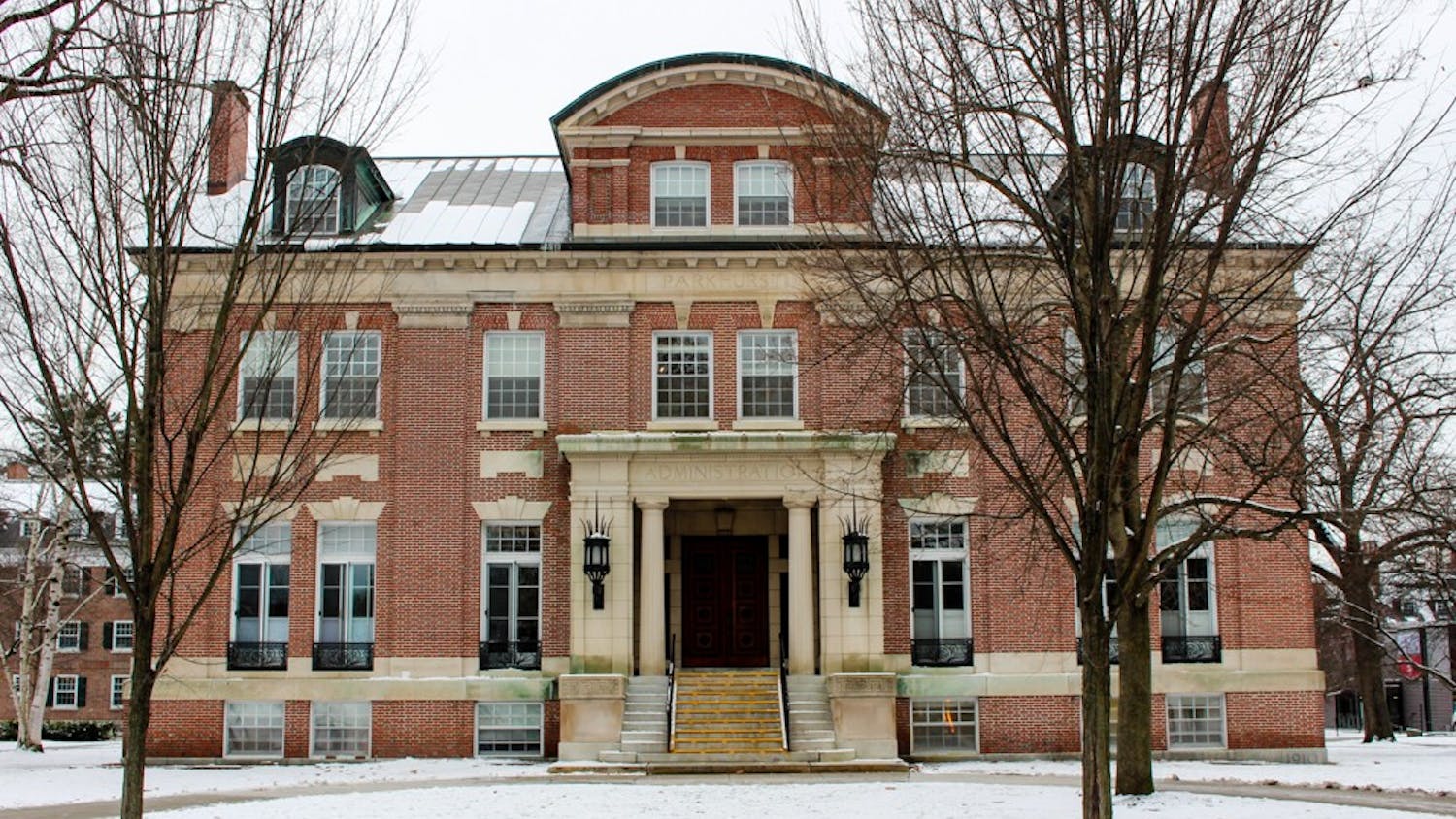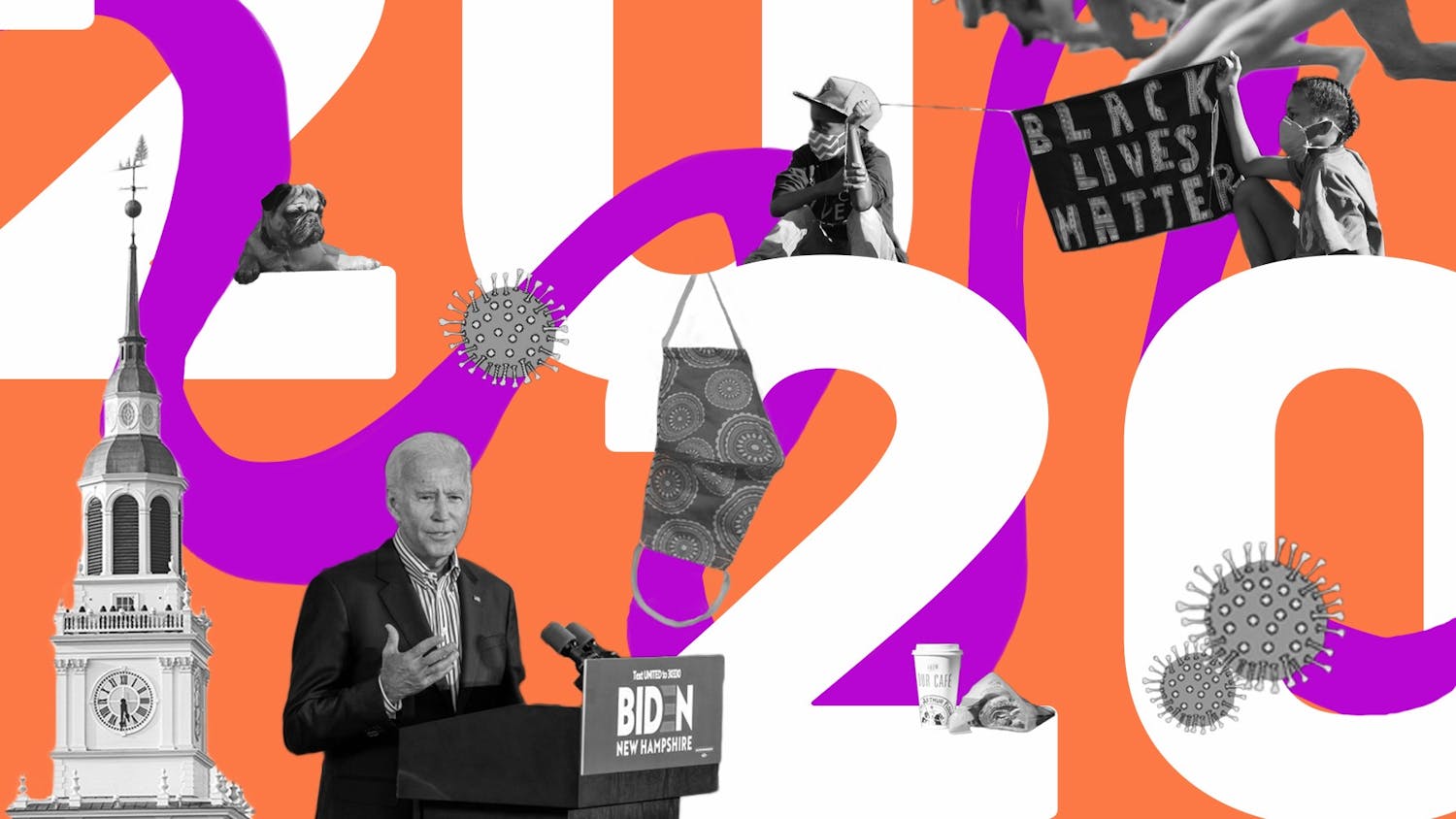While Dartmouth seeks to lower its case count further following last week’s outbreak, other schools in the Northeast are working to combat the spread of COVID-19 on their own campuses.
COVID-19 task force co-chair Dr. Lisa Adams explained that the College considers other schools’ strategies to combat the virus, but it may act differently depending on Dartmouth-specific factors.
“We're talking with our peers, comparing stories and comparing approaches and strategies, but also looking at our own experience,” she said, noting that the College is “never bound by what [its] peers are doing.” Like other schools, Dartmouth has benefitted from the fast turnaround of test processing, in part because of its close proximity to its testing partner, the Broad Institute of MIT and Harvard, which is located in Cambridge, Massachusetts.
College spokesperson Diana Lawrence added that “[e]very institution has unique aspects and challenges when it comes to developing policies around COVID-19.” She said decision-making factors include location of each school, how much residential space the college has, student population, programming, size and state and local guidelines.
“Schools share best practices with one another informally, but decisions made on every campus reflect the needs of that institution,” Lawrence wrote.
Like Dartmouth, Williams College recently experienced an increase in cases as compared to fall. Since the start of its spring term, Williams had planned a phased reopening, or a gradual release from arrival quarantine. However, a party of 80 to 100 people in an upperclassmen residence hall prompted the administration to prolong an early phase of the reopening plan and continue to prohibit students from socializing indoors with their “non-podmates” — any students outside of a specific group of two to 14 — until March 15. The social gathering has not yet been directly linked to the uptick in cases.
At Williams, which currently tests students twice per week, there have been two positive tests in the last week. This spring, Williams plans to bring 300 to 350 more students — compared to the fall term’s 1,455 — to campus and will provide each student their own room.
Some other small colleges in New England have had more success than Dartmouth maintaining social opportunities without seeing a substantial increase in cases. Middlebury College has seen a total of eight positive cases since Jan. 16, just before the official start of its winter term. As of Sunday, there are five active cases among students, all of whom are in isolation. Middlebury has not placed any students in quarantine.
Middlebury has chosen to switch from distinguishing specific phases of campus reopening to updating its testing frequency and other COVID-19 protocols each week. The college will also be “phasing out” its COVID-19 violations reporting form, referred to as “go/snitch” by students.
Hamilton College, which requires that students test three times per week, has reported a total of 20 positive cases since the beginning of spring semester, which started on Jan. 29. Over the past week, the campus’s positivity rate decreased from roughly 0.1% to 0.02%. There are currently two active cases and 13 students in quarantine.
At Princeton University, where all 5,267 undergraduate students have been invited back to campus for the spring semester, cases have stayed relatively low this term. As of Saturday, Princeton currently has one active positive case. Students test two times per week. Most instruction at the university is conducted online, and students are prohibited from traveling beyond Mercer County, where Princeton is located.
At Columbia University, 22 students tested positive the week of Feb. 22.
An outbreak of several positives in one residential hall in late February led the administration to consider a building-wide lockdown. Columbia has invited undergraduate seniors to live in campus housing for spring term — approximately 1,800 students, or nearly double the number of students on campus for the fall semester. Most classes for undergraduates will operate online.
Cornell University has seen 36 new cases this week and a test positivity rate of 0.09%. On Thursday, Cornell reported 12 active positive cases. It is currently operating under level “Green: New Normal,” which involves the combination of in-person, hybrid and online learning, the restriction of on-campus spaces to 50% capacity and limits on social gatherings to 10 people.
After having seen a steady decline in its COVID-19 cases since spring semester arrival, Brown University saw an increase in cases from Feb. 21 to Feb. 28. Fifty-eight community members tested positive, the majority of which were undergraduate students living off campus. Last week, the positive case count declined to 20, equivalent to a positivity rate of 0.1%.
The university is currently operating at level two of its three-phase reopening plan, meaning that students may eat and socialize in pods — a stable group of five or less people — without masks and may attend university-sponsored and university-organized in-person events. Undergraduate and graduate classes of 19 or fewer students can meet in person, libraries and fitness centers are open, and dining is “grab-and-go.” Students who live on campus may not leave for non-essential reasons.
Similarly, Harvard University, which has a total of around 6,700 undergraduates and has expanded spring housing to accommodate 3,100 undergraduates, has seen a total of 10 new positive cases in the last week, a 0.05% positivity rate. Twenty-one community members are currently in isolation and 44 are currently in quarantine. Students living on campus are tested three times per week; students living off campus are tested twice per week. Harvard College currently operates under “Level Lime,” which allows indoors gatherings of up to eight people in common spaces by reservation, takeout dining and travel within a 10-mile radius.
Yale University saw a total of 13 positive cases this week, five of which were undergraduates.
Under its current “Level Orange” stage, visitors are not allowed on campus, and the administration may move classes online, prohibit students living on campus from leaving or implement targeted quarantines of clusters on campus. Students currently test twice per week.
Larger schools in the Ivy League have struggled with higher numbers. The University of Pennsylvania, which welcomed 3,000 of its 10,000 undergraduate students back to on-campus housing, saw a spike of 268 cases during the first week in February. It has since decreased to 56 active cases, 17 of which are undergraduate students, and has seen a total positivity rate of 0.42% as of Feb. 27. Since the surge in cases in February, it has been operating under “Level 2: Heightened Awareness,” similar to Dartmouth’s own quarantine restrictions last week, meaning that the administration may restrict gatherings or restrict or deny access to libraries and gyms.
Penn students currently test twice weekly. According to a survey of 422 on- and off-campus students conducted by The Daily Pennsylvanian, about 70% of respondents said they “believe their peers are not acting responsibly,” and over 71% said they “know someone who has attended a gathering of over 10 people this semester.” Dining has been operating in a takeout format, but indoor dining will reopen on Monday.




